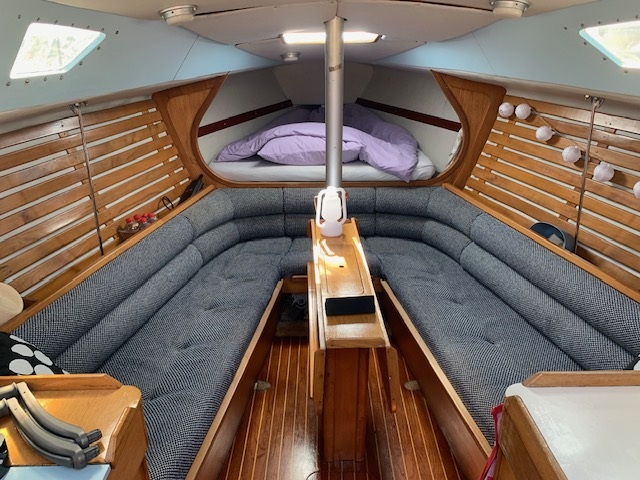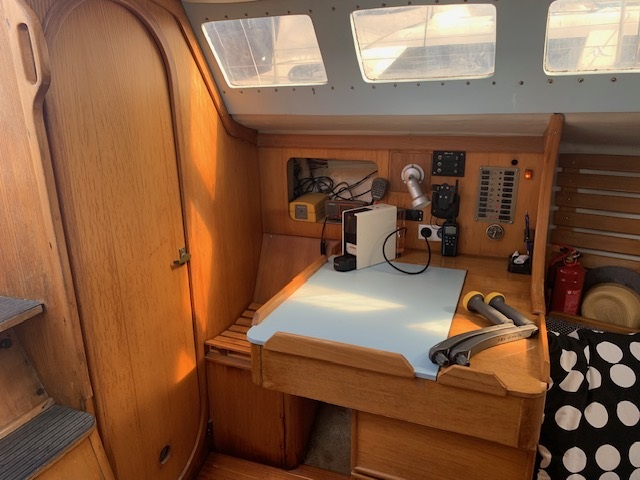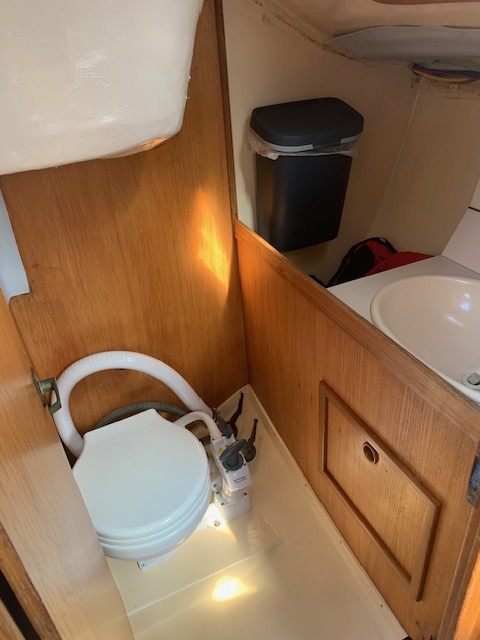Review of Feeling 850 Club
Basic specs.

If you have a photo you would like to share: Upload Image
Looking for a new boat? Find a Feeling 850 Club or similar boat for sale
Both the hull and the deck is made of fibreglass. Generally, a hull made of fibreglass requires only a minimum of maintenance during the sailing season. And outside the sailing season, just bottom cleaning and perhaps anti-fouling painting once a year - a few hours of work, that's all.

The boat is equipped with 5-6 berths, a galley, 100.0 liter fresh water capacity and toilet facility.





The Feeling 850 Club is built with a fractional rig. A fractional rig has smaller headsails which make tacking easier, which is an advantage for cruisers and racers, of course. The downside is that having the wind from behind often requires a gennaker or a spinnaker for optimal speed.

The Feeling 850 Club has been built with different keel alternatives.
Fin keel
One option is a fin keel. A boat with a fin keel is more manoeuvrable but has less directional stability than a similar boat with a full keel.
The keel is made of lead. Compared with iron, lead has the advantage of being 44% heavier, which allows a smaller keel and hence less water resistance and higher speed.
The boat can enter most marinas as the draft is just about 1.70 - 1.80 meter (5.58 - 5.88 ft) dependent on the load. See immersion rate below.
CentreBoard
Another option is a centreboard keel. A centreboard keel is a pivoting lifting keel, allowing to sail both coastal and inland waters.
Feeling 850 Club can enter even shallow marinas as the draft is just about 1.00 - 1.10 meter (3.28 - 3.58 ft) dependent on the load. See immersion rate below.
Sailing characteristics
This section covers widely used rules of thumb to describe the sailing characteristics. Please note that even though the calculations are correct, the interpretation of the results might not be valid for extreme boats.
What is Capsize Screening Formula (CSF)?
The capsize screening value for Feeling 850 Club is 2.32, indicating that this boat would not be accepted to participate in ocean races.
The immersion rate is defined as the weight required to sink the boat a certain level.
The immersion rate for Feeling 850 Club is about 208 kg/cm, alternatively 1170 lbs/inch.
Meaning: if you load 208 kg cargo on the boat then it will sink 1 cm.
Alternatively, if you load 1170 lbs cargo on the boat it will sink 1 inch.
Sailing statistics
This section is statistical comparison with similar boats of the same category. The basis of the following statistical computations is our unique database with more than 26,000 different boat types and 350,000 data points.
What is L/B (Length Beam Ratio)?
The l/b ratio for Feeling 850 Club is 2.82.
The ballast ratio for Feeling 850 Club is 38%.
SA/D (Sail Area Displacement ratio)
Indicates how fast the boat is in light wind:
- Cruising Boats have ratios 10-15
- Cruiser-Racers have ratios 16-20
- Racers have ratios above 20
- High-Performance Racers have ratios above 24
Sail-area/displacement ratio (SA/D ratio): 24.17
Maintenance
If you need to renew parts of your running rig and is not quite sure of the dimensions, you may find the estimates computed below useful.
| Usage | Length | Diameter | ||
| Jib sheet | 9.3 m | (30.5 feet) | 12 mm | (1/2 inch) |
| Genoa sheet | 9.3 m | (30.5 feet) | 12 mm | (1/2 inch) |
| Mainsheet | 23.2 m | (76.2 feet) | 12 mm | (1/2 inch) |
| Spinnaker sheet | 20.4 m | (67.1 feet) | 12 mm | (1/2 inch) |
This section is reserved boat owner's modifications, improvements, etc. Here you might find (or contribute with) inspiration for your boat.
Do you have changes/improvements you would like to share? Upload a photo and describe what you have done.
We are always looking for new photos. If you can contribute with photos for Feeling 850 Club it would be a great help.
If you have any comments to the review, improvement suggestions, or the like, feel free to contact us. Criticism helps us to improve.
